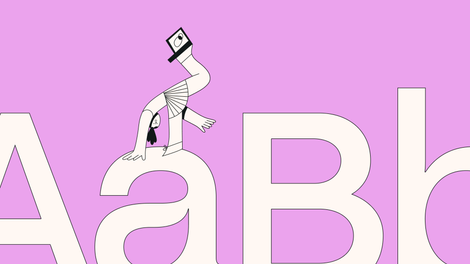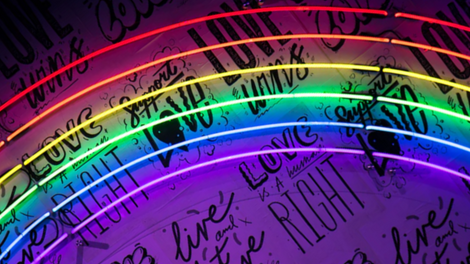Creating meaningful tattoo designs is hard; we get it. You can only search “tattoo inspo” on Pinterest for so long.
Pinterest can be a great source of inspiration, but often, using those designs means you’ll be one of thousands with the same tattoo.
Instead, we’re going to teach you how to come up with your own custom tattoo design by educating you all about tattoos and their common styles and themes.

This article will discuss the history of tattoo art, how tattoos are applies, the best spot to get a tattoo, and some popular styles. We’ll also include some tattoo ideas and inspiration to get you started.
Tattoos have long been a controversial but desirable form of art due to their permanence and social significance in different cultures. That’s what’s so cool (and sometimes scary!) about tattoos; they’re a major commitment.
But meaningful tattoo designs can be a great way to express yourself.
Tattoos haven't always been generally accepted in society. But lately, the sentiment around tattoos is changing, especially in the younger generations. More people are getting tattoos, and in turn, more companies are jumping on board.
Jumpstart your ideas with Linearity Curve
Take your designs to the next level.
The stereotype used to be that getting a tattoo would make it harder to get jobs. However, many major brands have updated their policies and become tattoo-friendly.
Google, Ticketmaster, Amazon, FedEx, and UPS are just a few employers with lax rules about tattoos.
So, when exactly did this shift happen, and have tattoos always been controversial? We’ll take you through the history of tattoos and break down the change in cultural acceptance over the past few centuries.
The history of tattoo art
Tattoos have been around for longer than you might think.
Tattoo art and body modification have been common since ancient times, and have ebbed in and out of cultural acceptance for thousands of years.
Many cultures and religions throughout the world have condemned tattoos, but some have embraced them. Buddhists and Hindus, for example, have historically used tattoos as a means to further their spirituality.
Acceptance and perception of tattoos has changed a lot over the centuries. Let’s break things down further and discuss how tattoos were used and perceived depending on the time period and location.
Prehistoric
Tattooing has been practiced across the globe since at least Neolithic times, which was discovered when scientists inspected mummified preserved skin.

We already know that the oldest discovered proof of tattooing dates back to 3250 BC, but this wasn’t an isolated event. Tattoos have been found on human remains in Alaska, Egypt, China, Russia, the Philippines, and countless other locations.
The earliest discovery of tattoo art was discovered by scientists on Ötzi the Iceman. Scientists believe he lived around 3370 to 3100 BC.
There is also strong evidence that people, specifically women, in ancient Egypt engaged in body modification and tattoo art. And sculptures in ancient China depict men with tattoos in the 3rd century BC.
Native Americans used tattoos as symbols of protection and guardian spirits. Some tribes of Native Americans applied tattoos using sharpened bone or rock.
Now, our timeline will jump to the 18th century to talk about how tattoos were brought back to the west.
18th century
Tattoos were brought to the west by well-known sailors like Captain Cook.
Captain Cook sailed to Polynesia in 1769 and was intrigued by the local peoples' tattoos. He and his crew decided to get their own tattoos before returning to the west.
This event coined the term “tattoo” in the English language and increased interest in the art form.
19th century
Somewhat surprisingly, royals in England actually sported tattoos during the 19th century.
In 1862 Albert, the Prince of Wales tattooed a Cross on his arm during a visit to the Holy Land. Then, his sons, the Duke of Clarence and the Duke of York, got dragon tattoos during a visit to Japan in 1882.

In 1891, Samuel O’Reilly created the first electric tattoo machine. He claimed that he was inspired to build it from Edison’s electric pen.
Around the same time, people would cover their bodies in ink as a roadside attraction. Famous tattooed performers included John O’Reilly and Emma de Burgh.
Discover the Diverse World of Tattoo Styles
Embark on a journey through the rich and varied universe of tattoo art. Explore different styles and find inspiration for your next piece.
20th century
In the early 20th century, tattoos were still mostly found on circus performers or sailors.
It wasn’t common for the average person to have a tattoo. However, some wealthy women would get permanent makeup, known as cosmetic tattoos, done in secret.
In the 1950s and 1960s, rebels and “bad boys” would get tattoos as a symbol of rebellion. And in the 1970s and 1980s, there was another rise in the popularity of tattoos, this time slightly more mainstream.
However, tattoos did not become widely socially accepted until recently.

American culture has been rapidly growing to accept tattoos as part of the mainstream culture. There are a wide variety of employers who have grown to accept tattoos, leading more people to be willing to make the commitment.
So, let’s talk about how it works.
How tattoos are done

When you walk into a tattoo shop to get a tattoo done, you might not think about the science behind body art.
Let’s break down how a tattoo works and how it becomes a permanent mark on your body.
With tattoos, a design is created by puncturing the skin with an electric tattoo machine to inject ink into a deep layer of your skin. In Stick and Poke, this process is done manually by puncturing the skin with a single needle and injecting the ink by hand.
Tattoo guns pierce through the outer layer of skin, the epidermis, and press the ink into a deeper layer of skin known as the dermis.
Each time the needle penetrates the skin, it creates a wound that signals the body’s immune system to start the inflammatory process. This sends cells to the site of the wound to attempt to clean and fix the damage.
Unless there is an infection or allergic reaction, the healing process starts soon after. Some have a negative experience with their first tattoo due to allergic reactions, so starting with a small test before fully committing to a large design is an excellent choice.
The excess ink is “cleaned,” and tissue is repaired by fibroblasts.
The tissue that forms after a tattoo initially heals is called granulation tissue, which is essentially scar tissue. Later, this heals into fibrous tissue, and the tattoo is officially considered to be healed.
So, since this process is permanent, is there any chance you can get a tattoo removed? Let’s discuss.
Tattoo removal
As we now know, tattoo ink is placed beneath the top layer of the skin, which makes removing a tattoo pretty tricky.
But some impressive progress has been made in tattoo removal in the last few years.
Standard techniques for tattoo removal today are laser surgery, surgical removal, and dermabrasion. None of those sound particularly fun, but those are the only current options if you want a tattoo removed.
Fun fact: black is the easiest color to remove from a tattoo.
Despite significant improvements in tattoo removal, it’s still incredibly painful and expensive. Even more so than the pain of the original tattoo application.
And that’s why you need to be careful about where and what you get tattooed on yourself. Let’s start with the where.
Best spots to get a tattoo

If you’re considering getting a tattoo but worried about what your job (or your parents) might think, some spots are more discreet than others.
Obviously, a forearm tattoo, finger tattoo, or outer bicep tattoo will be more obvious than an ankle tattoo or thigh tattoos in traditional business clothing. But there are some sneaky places to get tattooed that can be easily hidden, like an ear tattoo.
Places to get a tattoo that can easily be hidden include upper thighs, chest, inside of your lip, nape of your neck, and on the side of your finger. If you’re hoping to hide your new tattoo, these spots are an excellent option.
Of course, that all depends on what you normally wear and the social situations where you want to hide the tattoo.
However, if you’re not afraid to show your tattoos off to the world, you can go the opposite route and get a “tattoo sleeve.”
Essentially, a sleeve just means that the tattoo covers that entire area of skin. Some opt for a half-sleeve tattoo, while others go all in and get full tattoo sleeves.
Some have even gone so far as to get their entire bodies tattooed. According to the Guinness Book of World Records, the world’s most tattooed person, Lucky Diamond Rich, is 100% covered in tattoo art.
Lucky Diamond Rich has facial tattoos, tattoos on the inside of his mouth, and an inner eye tattoo. That’s quite a painful commitment.
Depending on who you talk to, some spots are better than others. Some say wrist tattoos are the most painful option, and others say an ear tattoo or finger tattoo is the most painful.
Here’s a pretty comprehensive chart that shows the most and least painful spots to get a tattoo, just so you can keep that in mind when you’re picking a location for your tattoo design
Experiencing pain while being tattooed is dependent on many factors, but generally, the most painful places to get tattooed are the spots with the least fat, most nerve endings, and thinnest skin.
Some spots that are known to be painful are the armpit, rib cage, ankles and shins, elbows or kneecaps, and hips. And, as you can imagine, an eye tattoo is also considered to be incredibly painful.
It also depends on how large and detailed your tattoo is. A large, detailed piece with a lot of shading will take longer, so the pain is more extended than a simple minimalist tattoo.
If you’re super worried about tattoo pain, starting small is a fantastic option. Some less painful options for a tattoo location include outer thigh and outer bicep.
Now, let’s talk about the cost.
How much do tattoos cost?
So, you might be wondering - how much is this going to cost me?
There isn’t one simple answer, but we’ll fill you in on the factors that determine how much your tattoo will cost and the average cost of a tattoo.
On average, a simple small to medium-sized tattoo will cost you between $150 and $450.
The factors to keep in mind that will raise the price of your tattoo is the size, complexity, and the popularity of your tattoo artist.
Popular tattoo styles and inspiration
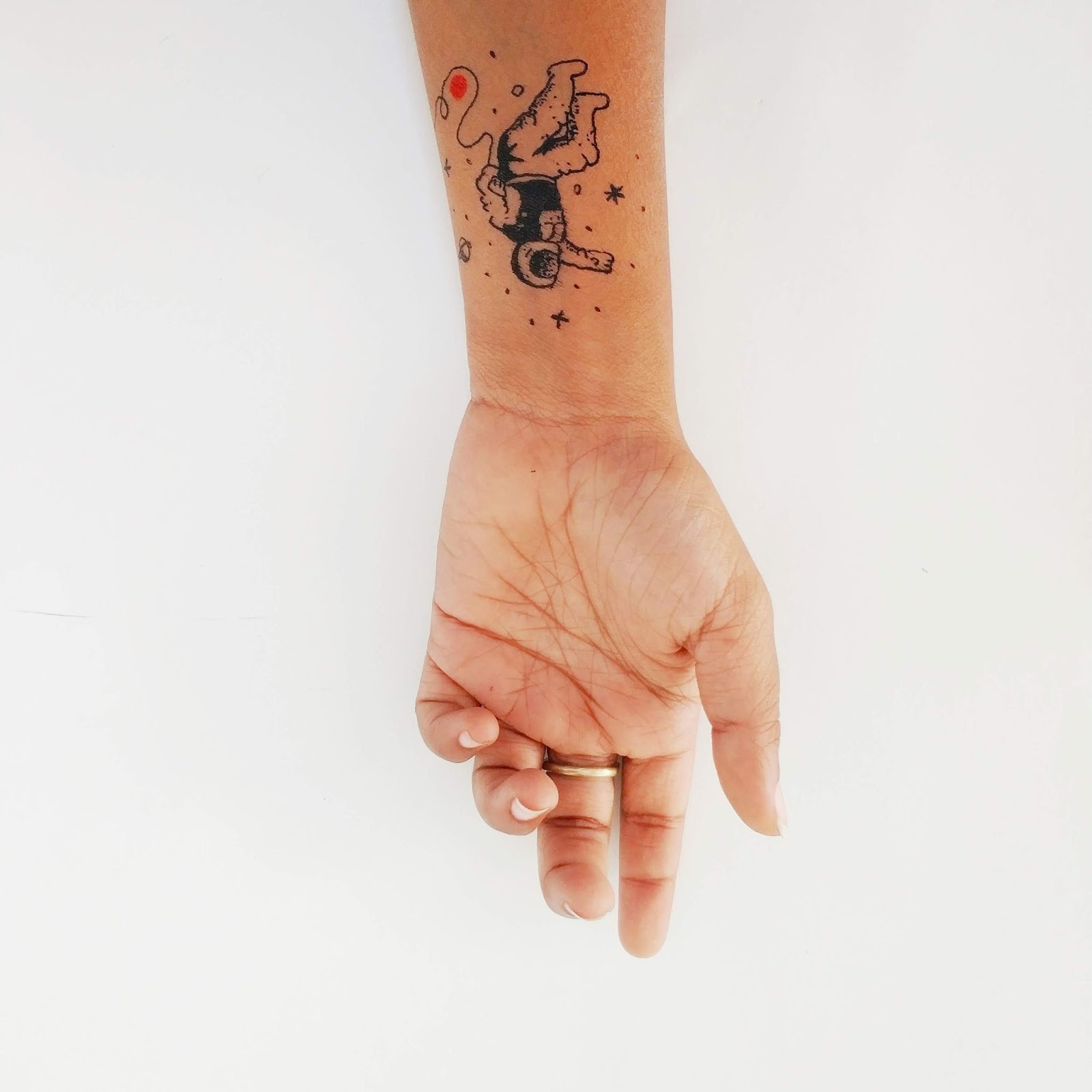
Tattoos are a completely individual choice and medium in which to express yourself, but there are some common styles that many tattoos follow.
The wide range of styles below is also an incredible glimpse into culture and history. Styles like tribal and Chicano tattoos are steeped in rich history and can be representative of a culture.
Tattoos, their popularity, and the most common tattoo designs of certain eras are a unique way to look at history and culture. This is especially interesting now that we know the background and history behind tattoos.
Some tattoo artists will specialize in one style, and people who choose to get tattoos may pick a favorite style to stick to in order to create a sense of balance with their tattoo art.
Of course, just because something is a popular choice doesn’t mean it’s the right thing for you. The perfect design for you is whatever you like best and feel the strongest connection to.
If you’re curious about the different styles, keep reading. We’ll break down the most popular tattoo styles and their characteristics, plus give you some examples that will inspire you.
Classic Americana tattoos
Classic Americana tattoos are the basis of contemporary tattoo design. They’re perhaps the most common style and have been a popular choice for a few decades.
The classic Americana style is also known as the traditional style. This old-school style is incredibly popular and features bold lines, colors, and imagery.
Master the Art of Tattoo Lettering
Delve into the world of tattoo typography. Learn the nuances of tattoo lettering styles and how to create expressive, impactful designs.
Common tattoo designs in this style include pinup figures, animals, roses, daggers, and anchor tattoos. Many tattoos reference American culture and American nationalism, such as the flag and other patriotic symbols.
The classic “mom” tattoo is an example of Classic Americana style. This style is generally what comes to mind when one thinks of a traditional tattoo, especially American tattoos.
New School tattoos
New School tattoos are pretty similar to Traditional Americana tattoos in style and color patterns but often have a modern spin.
This style is known for vivid colors, creative characters, and cartoon concepts influenced by pop culture.
Many artists who tattoo in this style draw inspiration from comic books, tv shows, and anime. Some common themes are animals tattoos, characters, pop culture, and fictional worlds.
Stick and poke tattoos
This simple style is becoming trendy with a younger audience.
Stick and Poke, also known as Stick-n-poke, is one of the oldest and most traditional styles on this list. Its simple methodology has also made it popular amongst DIY tattoo artists.
But don’t let that fool you; this style can be incredible when done correctly. Tattoo artists have been bringing this style back lately in a big way.
This style features thick and bold lines and is a great way to execute a small, simple piece.
Surrealist tattoos
Surrealist tattoos are distinct due to their vivid colors and bizarre designs.
This style is heavily inspired by the Surrealism art movement that made artists like Salvadore Dali and Pablo Picasso famous.
Surreal tattoos are similar to abstract tattoos but juxtapose realist tattoos due to the strange subject matter and purposefully unrealistic nature of their designs.
Minimalist tattoos
Minimalism is popular in interior design, graphic design, and tattoo design currently.
This style is known for simple tattoos and linework tattoos. A minimalist tattoo is an excellent choice for anyone looking for a delicate piece.
Realistic tattoos
Realistic tattoos are hard to pull off, but when done correctly, they can be breathtakingly realistic.
Common themes in this style are natural scenery, animals, and people. Some artists even pull off a 3D tattoo style that is incredibly impressive.
Tattoos of people, or portraiture, are popular for memorializing family and friends who have passed.
Realistic tattoos can be colorful or done with just black ink. The detailed design is what makes this style distinct.
Japanese tattoos
Japanese tattoos feature themes from Japanese culture and Japanese folklore. These themes often include motifs like cherry blossoms and mythical creatures like the very popular dragon tattoos.
Irezumi is the Japanese word for tattoo. The Irezumi style is a blanket term used to describe tattoo styles originating in Japan.
Often, this style is executed with massive images that encompass large patches of skin.
Geometric tattoos
Geometric tattoos are another trendy style that we see a lot of.
This can be a great way to fill space on a sleeve or create a large design that covers a lot of skin.
There is a wide variety of interpretations of the Geometric style, but Geometric designs are generally created with black ink and feature sharp edges and unique shapes.
Common themes are sacred geometry and organic elements.
Blackwork tattoos
Blackwork tattoo style is a broad category that covers any black tattoos or tattoos done with only black ink.
The style is heavily influenced by tribal tattoos and is sometimes similar to geometric tattoos. It often features thick black lines and blocks of black color.
Watercolor tattoos
Watercolor tattoos are super trendy and modern.
We are obsessed with this style, but it is tough for tattoo artists to pull off.
Common themes of watercolor tattoos include floral tattoos and nature themes.
Tribal tattoos
Tribal tattoos, or Indigenous body art, is the original tattoo style that started it all.
Native Americans, Polynesians, and other indigenous cultures still use this style to honor their cultures.
As the oldest tattoo style, tribal tattoos are thousands of years old. There have been a wide variety of diverse styles throughout history and locations.
Chicano tattoos
Chicano tattoos are rich with Chicano culture. Themes in Chicano tattoo style include symbols or motifs from the Mexican Revolution and Pachuco culture.
This style features fine lines and black and grey color schemes.
That wraps up the most common tattoo styles. Check out our blog about tattoo styles if you’re interested in more information.
Now, let’s talk about common tattoo themes.
Get creative with our ready-to-use templates.
Linearity Curve offers templates for every social media platform and various use case templates for posters, business cards, slides, app store screenshots, and more.
Common tattoo themes
These standard tattoo designs are a great place to start if you’re looking to design your own dream tattoo. Take these ideas and make them your own, combine them, or just get inspired.
There is a wide range of things people get tattooed; this list narrows the most common of them down into categories and gives examples for each theme.
Let’s get into it.
Florals
Florals are incredibly common in tattoo design. Flower tattoos are perhaps some of the most popular subjects for tattoos.
Flowers can also be a way to remember or honor someone. Favorite flowers of loved ones is a subtle and simple way to remember someone important to you.
Roses, lilies, and sunflowers are all fantastic choices for a floral design.
Animals
Animals are another excellent choice for your tattoo design. An animal tattoo can be realistic, minimalistic, or geometric.
Pick a majestic animal from the animal kingdom like a lion or tiger, or just get your favorite pet tattooed on you.
Or, you can get a mythical beast like a dragon or a unicorn - there are no rules here.
If you want to remember or honor your furry best friend but you don’t want to be basic, there are some really unique ways to do it. You can tattoo an outline of their paws or their ears for a more minimalist and unique look.
Our beautiful animals deserve to be remembered.
Nature
Nature is all around us. Trees, birds, and nature scenes are all common tattoo themes.
Examples of nature-themed tattoos are bird tattoos, mountain tattoos, and ocean tattoos.
Bird designs and other nature tattoos can be whimsical and delicate or incredibly realistic.
Symbols
Symbols are a staple of tattoo art. This is exceptionally popular in minimalist tattoo design and stick and poke.
Ideas for symbols to get tattooed are a cross tattoo, skull tattoo, clock tattoo, feather tattoo, dream catcher tattoo, heart tattoo, and anchor tattoo.
Astrology
Astrology, maybe you believe in it, maybe you don’t. Regardless, it is a huge theme in tattoo art.
Many people get their horoscope signs tattooed on them. Another popular choice is to get the constellation of your horoscope or your birthstone.
Travel
A great way to remember your travels is by getting a commemorative tattoo.
You can get a blank map and color in the places you’ve traveled, tattoo relics from travel spots, or just find objects that remind you of travel.
Examples of some travel-inspired tattoo ideas are a compass tattoo, a mountain tattoo, and a plane tattoo.
Matching Tattoos
Matching tattoos can be a great way to make a permanent commitment or commemorate an important person in your life.
Getting a matching family tattoo, sibling tattoo, mother daughter tattoo, or couple tattoo can result in some truly meaningful tattoo designs. They often hold strong personal meanings to those who decide to get them.
People often get the same design or matching elements like the sun and moon, yin and yang, etc. Something with a deep meaning to the pair or just a fun memory.
We keep trying to convince our coworkers to get matching tattoos, but surprisingly, no one is biting. Weird.
Getting a matching tattoo is a powerful bonding experience. A meaningful tattoo with a loved one is certainly unforgettable.
Just maybe don’t get a matching couple tattoo after only dating for a week. Or do, but don’t say we didn’t warn you.
Text
And finally, written words. Many people get important words or phrases tattooed on them.
We’ve seen some pretty heartwarming examples of people who have tattooed kind words from deceased loved ones. Or just quirky phrases that people relate to.
Lettering tattoos can be done in a variety of fonts and sizes.
How to create a tattoo design with Vectornator
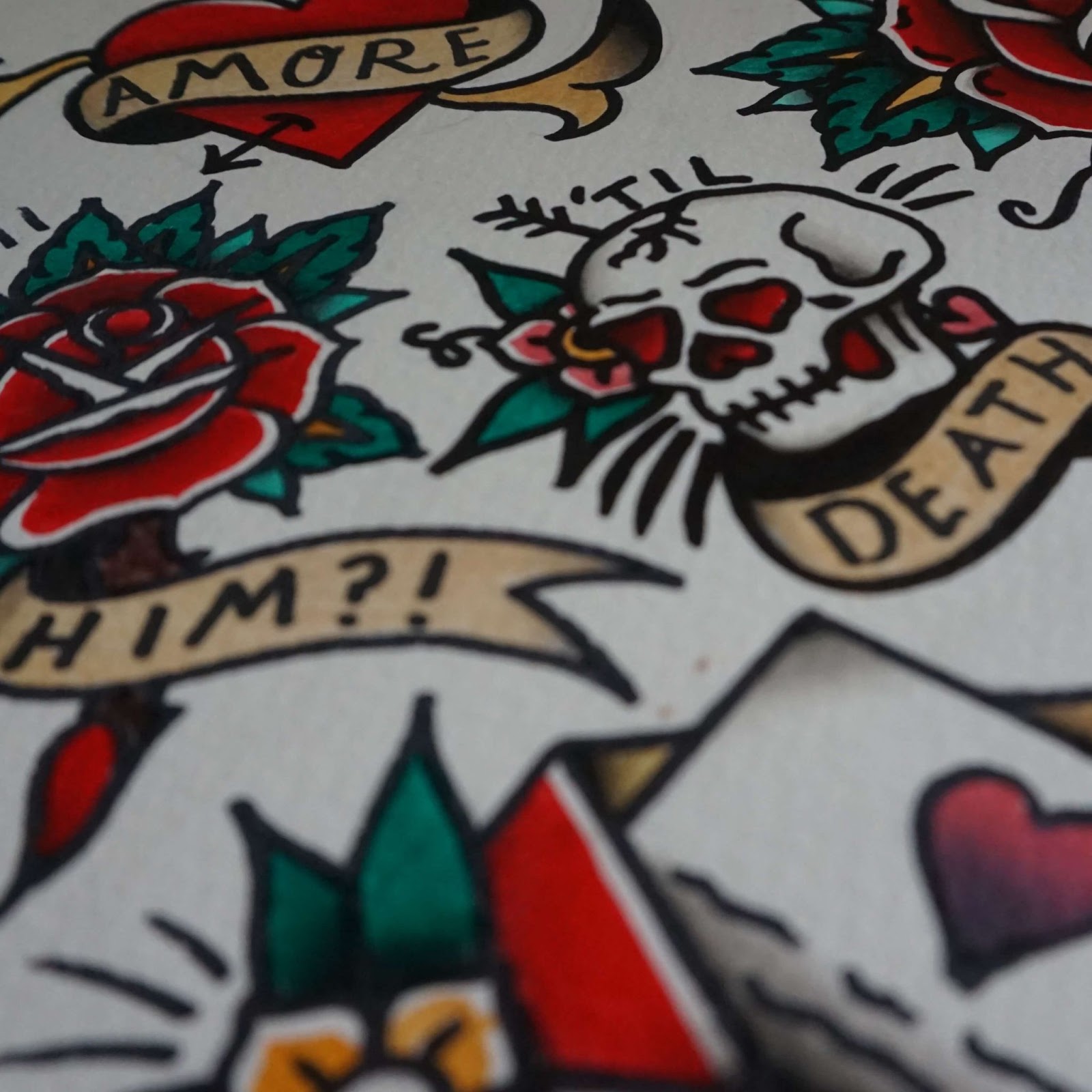
Now that you know all of the common themes and styles, let’s talk about creating our own meaningful design for a tattoo.
Creating your own tattoo design is such a great way to ensure that your tattoo or a tattoo you’re doing for a client is special and unique.
Whether you're a tattoo artist looking for a new way to create designs or a creative type who wants to play a part in their tattoo design process, this step-by-step list should be a great place to start.
With Vectornator designing your own tattoo stencil is simple. Our design software is built for beginners and is entirely free.
Here’s how you can use Vectornator to create your own tattoo design:
- Get inspired: The list of examples above should be a great place to get some inspiration for your own tattoo design. Inspiration is great, but be sure to create custom designs that are unique. Pinterest is also an excellent choice to find some styles and designs that you like.
- Create a draft: The next step is the hardest part, getting something down on paper (or in design software). You can create a draft in Vectornator software using our Pen tool or just use a pen and paper to sketch things out. There are no bad ideas during this stage.
- Step away and come back: Now that you have a design (or designs) drafted, step away and come back to it with a fresh pair of eyes. And don’t be afraid to ask for some feedback from friends or coworkers.
- Digitize and finalize your design: Make some final tweaks to your draft, or narrow your designs down to your best draft. Try out our different fonts, our Auto Trace function, and our Gesture Controls to make your final tweaks and edits.
- Create your stencil: If you’re using Vectornator, it's easy to save and print your digital files. Then, use either a Themofax to print your design onto a stencil or hand trace it onto tracing paper if you’re old school.
- Tattoo your design: The final stage. It’s time to tattoo your design or take your design to a tattoo artist to get a tattoo done.
And that’s it! You now have a beautifully designed tattoo that is unique and meaningful to you.
Plus, you know all about the history of tattoo art and the most common styles and themes to watch for.
Wrap up
Okay, that was a lot to take in, but hopefully, this article left you feeling inspired and ready to create your own custom tattoo design. We’re certainly feeling ready to make some cool designs.
Follow us on socials and share your tattoo designs with us. We’d love to see them!
Jumpstart your ideas with Linearity Curve
Take your designs to the next level.
Share this!
Ben Barnhart
Ben is a Content Lead for Linearity living in Berlin. His hobbies include board games, cooking, reading, and writing.


:quality(75))
:quality(75))



:quality(75))
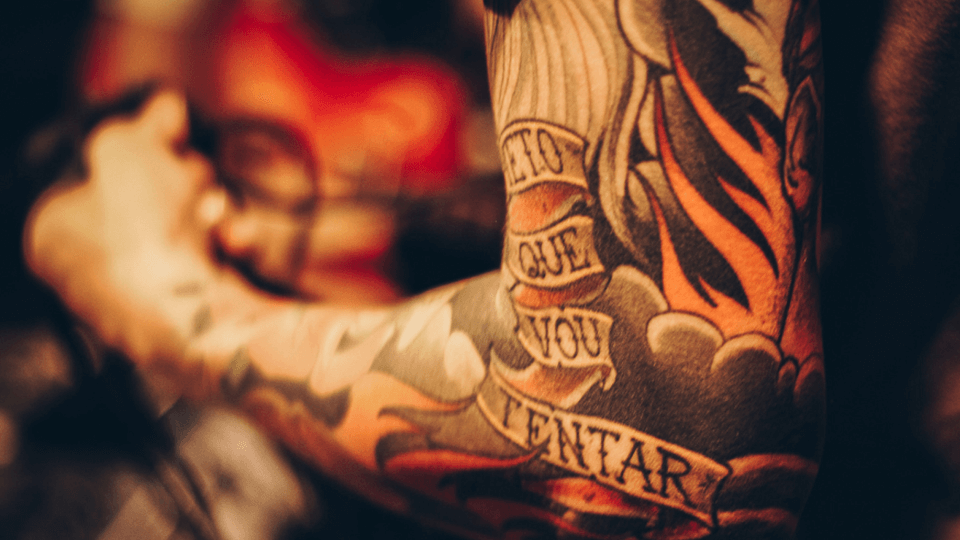
:quality(75))
:quality(75))
